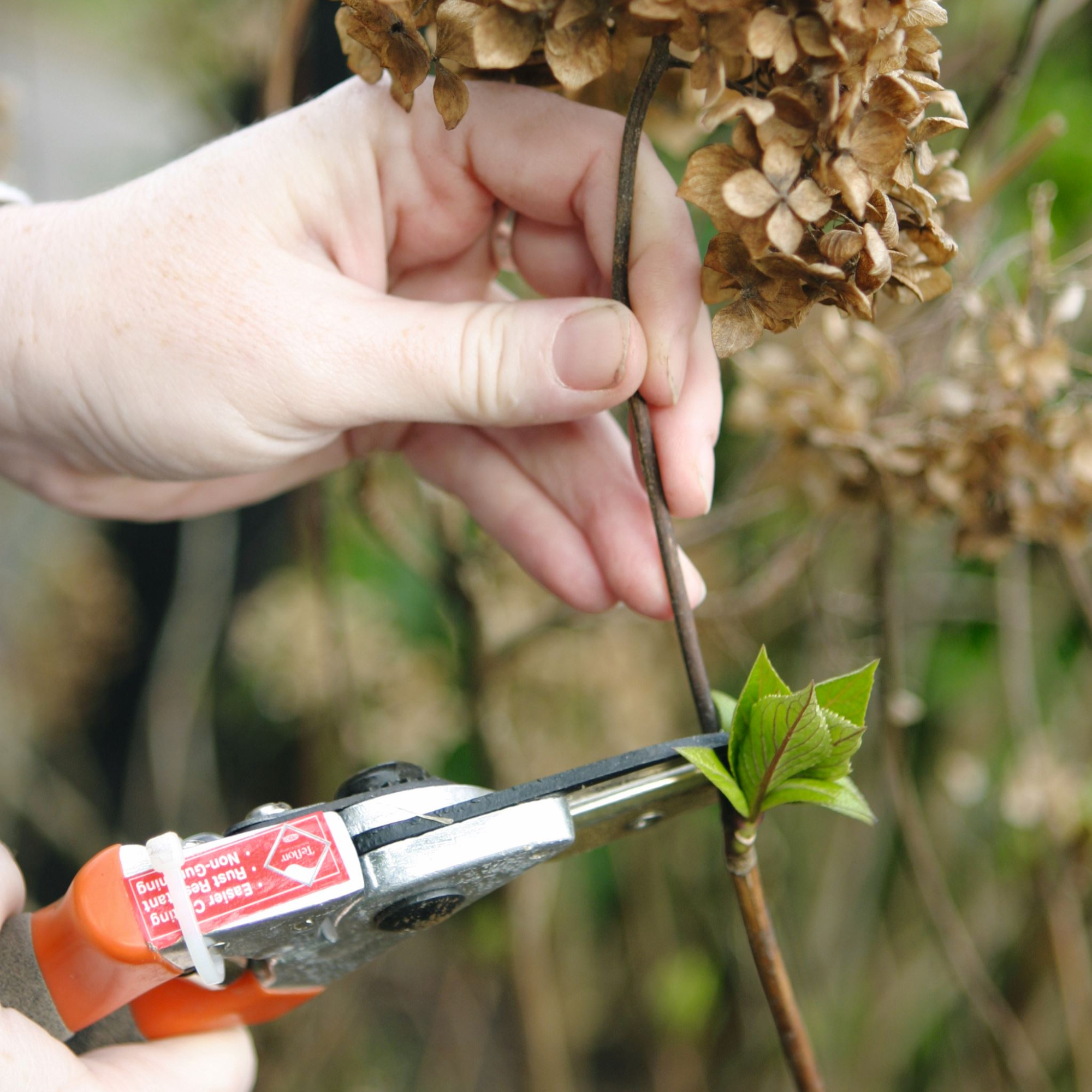
You probably don’t need us to tell you that hydrangeas are beautiful flowers that are always a welcome addition to our ever-growing garden ideas, but the question stands: should you deadhead hydrangeas?
If you've been on the hydrangea hype, from eager to learn how to grow hydrangeas in pots all the way to learning how to take hydrangea cuttings, there's likely a common ground for your endeavours: their strikingly beautiful appearance. So it only makes sense that you would want to be clued up on the best practices for caring for these gorgeous blooms.
But we also know that there are many plants that you shouldn’t deadhead, so it can be hard to gauge your next move when your hydrangeas start looking a little worse for wear. That’s why we’ve reached out to garden experts to understand whether you should deadhead hydrangeas or not.

Why you should deadhead hydrangeas
Hydrangeas have always been popular, and in recent years their popularity has soared. And Charlotte McGrattan, Hardy nursery stock buyer at Hillier Nurseries, says, 'Thanks to their reliable, long-flowering period from late spring to early autumn, hydrangea have long been one of the most popular garden shrubs, famed for their ability to change colour, which typically happens as the plant matures in late summer.’
But while hydrangeas famously offer their impressive flowerheads throughout mid-to-late summer, there comes a time when their colour starts to fade, their petals turn crispy, and they look a little worse for wear. And when this happens, you could deadhead them.

'Deadheading hydrangeas is a common gardening practice that can be very beneficial for the health and appearance of these plants,' explains Peter Ivanov, gardening and plant expert at Fantastic Gardeners.
'It's the removal of spent flowers from the plant once they have faded and it helps them put their energy towards the root, stems and leaves instead of producing more seeds, which will help for future growth. Withered and whether or not you should do it will depend on the type of hydrangea you have and your specific gardening goals.'
According to Peter, some good reasons for deadheading hydrangeas include:
- Enhancing aesthetics – 'Removing faded flowers can improve the overall appearance of the plant and keep your garden looking tidy and fresh.'
- Encouraging new blooms – 'For hydrangea species that bloom on new wood, deadheading can stimulate the production of new flower buds, leading to more blooms in the current growing season.'
- Preventing self-seeding – 'Deadheading can prevent some hydrangea varieties from self-seeding and potentially becoming invasive.'
And while there are certainly many perks to deadheading your hydrangeas, it turns out that you have a choice. In fact, you don’t have to if you don’t want to.

Why you shouldn’t deadhead hydrangeas
Although you may assume that not deadheading your hydrangeas is a massive deadheading mistake, forgetting to deadhead your hydrangea plant isn’t the end of the world. It won’t kill your plant, and it might not even affect it at all.
Some experts actually prefer not to deadhead their hydrangeas, as they get to spend even more time enjoying the large flowerheads these plants offer - even when they’re dry. This is similar to those who choose not to deadhead alliums and agapanthus.
Harriet Worsley of Worsley Design & Consultancy says, ‘I use Hydrangea arborescens ‘Annabelle’ in many of my designs. ‘It’s great to leave the fluffy flower heads on through the winter to add a bit of form and structure. They will have turned brown, but they provide structure and interest.’

In fact, some hydrangea lovers prefer their hydrangeas brown and crispy and find that they look best when they dry them for indoor displays.
If you have mophead hydrangeas, keeping the spent blooms on over the winter can also protect the plant from frost, allowing it to survive the harsher temperatures without you having to step in. So, there are so many benefits to choosing not to deadhead hydrangeas.
We understand that a whole garden border full of dead hydrangea flowers may look a little untidy, though, so you might want to streamline where you do and don’t deadhead your hydrangeas. You could opt to deadhead the ones in your garden border but then leave the hydrangeas you’ve grown in pots alone for visual intrigue.
What you'll need
If you want to deadhead your hydrangeas, it's best to have a basket, bucket, or trug to hand to collect the spent flowerheads. This will keep your garden tidy.
The rust-resistant blades on these pruners are perfect for deadheading your hydrangeas, especially if the stems are particularly thick and woody.
Always clean your pruners before deadheading hydrangeas. All you need to do is pour a little of this a clean cloth and wipe over the blades to prevent the spread of disease.
FAQs
When should I deadhead hydrangeas?
'If you decide to deadhead your hydrangeas, the best time to do it is right after the flowers have faded, but before they have a chance to form seeds,' explains Peter from Fantastic Gardeners. 'This is usually in late summer or early autumn for panicle hydrangeas and smooth hydrangeas.'
'For bigleaf and oakleaf hydrangeas, it's highly recommended to avoid deadheading unless you are removing dead or diseased wood.'
How often should I deadhead hydrangeas?
'Hydrangeas require some deadheading once a year,' advises Charlotte from Hillier Nurseries. 'Once mopheads and lacecaps have finished flowering in autumn, the dead flowerhead can be removed. However, to give the shrubs more protection from frost over winter, it is best to leave the flowerheads and cut them off in early spring the following year.'
'Pruning established mopheads and lacecaps to encourage the production of new growth and more abundant flowering can be done by cutting one or two of the plant's oldest stems to the base.'
So, will you choose to deadhead your hydrangeas? Or will you leave them to enjoy over the winter months?







